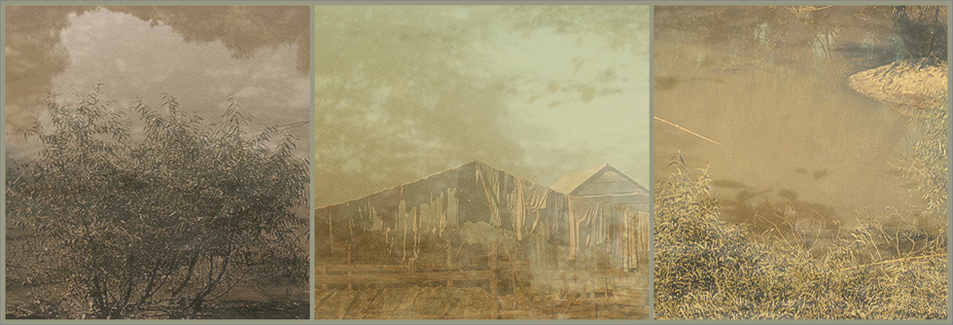| > |
90. Promised Land
Written & performed by Mose Allison
Recorded in New Jersey, March 7, 1957
From the album Back Country Suite for Piano, Bass, and Drums
[Prestige, USA 1959]
Here is how Frank John Hadley, writing in the Grove Press Guide to Blues on CD, described the album Black Country Suite for Piano, Bass, and Drums, in which Promised Land is featured: ‘Mose Allison’s seminal debut recording from 1959 launched his career as a singular interpreter of American musical styles. The Mississippi pianist wraps country blues and modern jazz together in a series of autobiographical pastoral dance sketches, serving them up in his trademark low-key approach.’ [1]
Mose John Allison Jr. was born in 1927 in a cotton town in the Mississippi delta called Tippo. [2]. Here are the weather conditions for today in Tippo Mississippi – ‘Tropical weather: Hurricane Omar (North Atlantic). Tropical Depression; sixteen (North Atlantic). Tropical Depression; twenty two (Western Pacific).’ [3]
And here is the five day forecast: ‘Wednesday, partly cloudy 85°F, 61°F. 29°C, 16°C. Thursday, thunderstorms 90% chance of precipitation 70°F, 52°F, 29°C, 11°C. Friday, partly cloudy 70°F, 47°F, 21°C, 8°C. Saturday, clear 72°F, 47°F. 22°C, 8°C. Sunday, clear 76°F, 49°F. 24°C, 9°C. Tomorrow is forecast to be much cooler than today.’ [4]
Asked by ABC music journalist Andrew Ford about his earliest musical recollections, Allison said ‘I remember hearing jazz records. I had a cousin who had a wind-up Victorola, there was no electricity there at the time, and she had some records by Louis Armstrong, Fats Waller, people like that, and she was a college student I think, and I think that’s when I first heard it. I probably heard music before then, because my dad was a self-taught pianist, a sort of a ragtime piano player; he played Sweet Sue and Twelfth Street Rag, stuff like that. And so there was always music, there was always a piano in the house where I was brought up. So I was hearing music I suppose from the time I was a kid, from the time I was born practically. But the jazz records that I heard, they really made the first impression.’
Now here is another question by Ford, about location, music, race, and land: ‘Mississippi between the world wars was presumably a heavily, fiercely segregated place; was it unusual for a white kid growing up there to listen to music like that?
Allison: Not in the area where I grew up, because it wasn’t a town, it was like in the country. Tippo was just a village, just a crossroads; there were all cotton farms and there were sharecroppers and landowners. Most of the sharecroppers were black and most of the landowners were white, although there were black landowners, small landowners, and there were white sharecroppers as well. But predominantly it was black sharecroppers and white landowners. So the whole economy of the place and everything about it was based on that association. And so I never felt strange listening to blues; in fact they had blues on the jukebox at the service station there. And that’s where I first started listening to blues at the Tippo service station. Anybody could come in there; there were different areas of the place; they had a place in the back where the blacks could dance and stuff like that I think, but up front the whites shot craps. But the jukebox anybody could listen to.’ [5]
And now, meet John R Allison, son of Mose Allison. John was born in Manhattan in 1959. We’re not sure who is describing John’s childhood, but they are speaking in aid of a book of photographs by John called The Ultimate Blues Photo Collection from the Mississippi Delta.
John remembers the juke joints on his grand parents’ cotton farm and first ventured to enter one when he was 10 years old. ‘That seemed to be where all the action was, it was so exciting. Shotgun holes in the roof and the outdoor bathrooms had no structure at all, it was just an area on the ground. Saturday nights in Tippo were just hopping,’ Tippo was a small hamlet at a crossroads deep in cotton country. ‘I remember seeing a sign in the early 60s just outside of Tippo. It read: Tippo, Mississippi, Population 50 (not including the blacks)’. It was during one of these visits to Tippo when young John witnessed an impromptu performance of a one-man band. ‘He was an older black man playing a big fat guitar and he had a drum rigged up to his feet and a trumpet, or some kind of horn, propped up around his neck. It was a very strange and mesmerizing sight for me at that age. I think it was at that moment I realized that this place had a music all its own, and it was beautiful.’ [6]
Sources
[1] Frank John Hadley 1993 http://www.amazon.com/Back-Country-Suite-Mose-Allison/dp/B000000Y4N
[2] http://www.moseallison.net/mosebio.html
[3 & 4] http://www.wunderground.com/history/
[5] ‘Interview with Mose Allison’, by Andrew Ford, The
Music Show, 15 May, 1999, ABC Radio Network.
http://www.abc.net.au/rn/musicshow/stories/1999/1745618.htm
[6] The Ultimate Blues Photo
Collection from the Mississippi Delta, by Photographer John
Allison
http://216.239.59.104/search?q=cache:1yzb4QPcnOoJ:www.moseallison.com/johnallison.html+Tippo,Mississippi+Delta&hl=en&ct=clnk&cd=2&gl=uk
| < | > |
